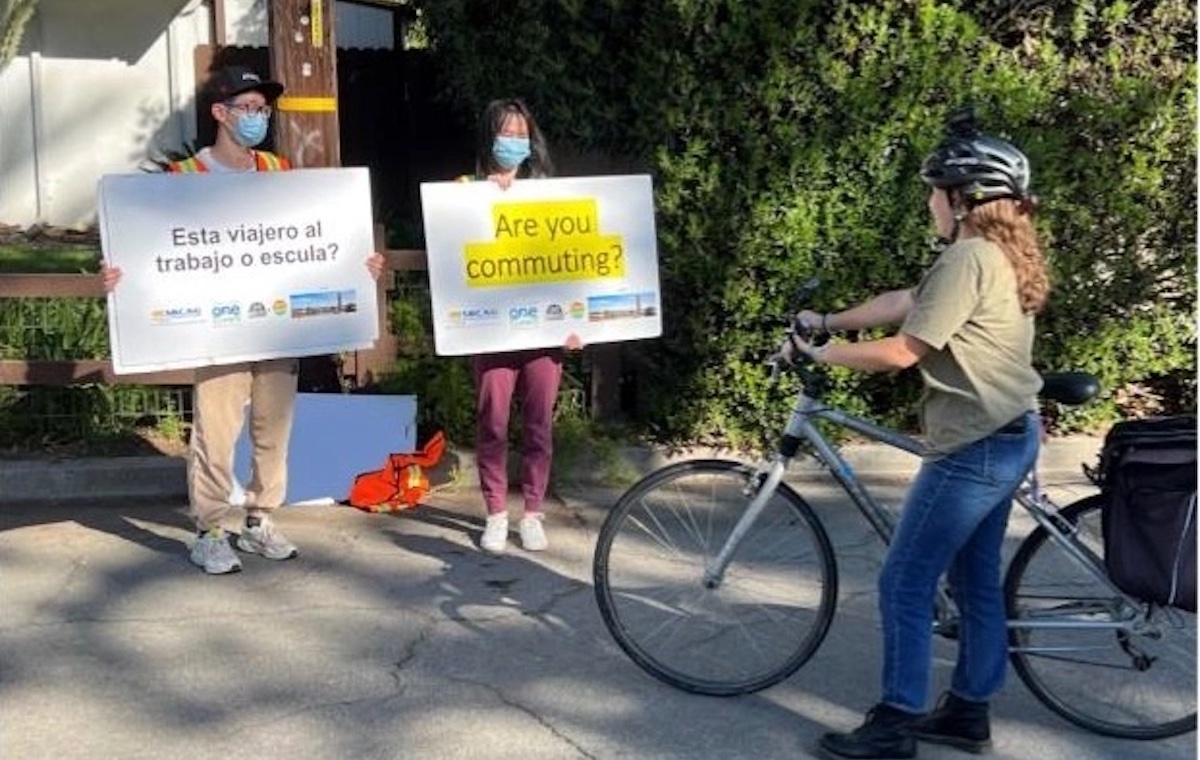Measuring the Equity of Bicycling in Santa Barbara
A Lot More Than New Bike Paths Needed

The recent opening of the beautiful $24 million Modoc-Las Positas Multi-Use Path presents an excellent opportunity to determine if the number and makeup of bicyclists in Santa Barbara will change in the future, especially since it hasn’t changed in the last decade. Bottom line: it will require a lot more than new bike paths.
The Modoc-Las Positas path was primarily funded by California’s Active Transportation Program (ATP) through grants to local governments and non-profit organizations for construction, education, and advocacy. Since the goals of ATP projects are to improve health, decrease greenhouse gasses, and increase equity, evaluation requires knowing the number of bicyclists who are women and men, children, people of color, and commuters.
Despite the investment of hundreds of millions of dollars, national and local data has shown only downward trends since a peak in 2014.

A COVID-related gap in data was somewhat filled by automated bike counters (Figure 2). Although not able to distinguish between cycling for recreation and commuting, these counters found virtually no changes in bicycling in the United States as a whole and along the West Coast. Sadly, there are no automated bike counters in Santa Barbara County.
In June 2021, the Bicycle Coalition for Social Equity and Decision Making (scientists, public officials, and UCSB students) began a study to fill the knowledge gap in Santa Barbara County.
We measured bicycle riders’ numbers, characteristics, diversity, and purpose along a residential section of the Obern Trail. The Trail connects the Modoc-Las Positas Multi-Use Path to UCSB. It is the second busiest trail in Santa Barbara County. According to the 2019 American Community Survey, people living near the Obern Trail are a median of 36 years of age, 49 percent white, 40 percent Hispanic, and 7 percent Asian. Fifteen percent are below the poverty line. In 2019, 4 percent bicycle to work, the same proportion as in the City of Santa Barbara. Since it winds through quiet residential areas but is also a preferred route for commuting and recreation, the Obern Path is the perfect place to observe all types of cyclists.
A motion detection camera was used to count the number of bicyclists per 24 hours on Wednesdays and Saturdays (see Table). In addition, we used two-hour in-person counts to estimate race/ethnicity, helmet usage, bicycle type, bicycle clothing, backpacks and determine if cyclists were commuters (photo). Finally, we asked bicyclists if they were commuting (photo).
The Table shows average 24-hour count on Saturdays and Wednesdays was 747 and 573, respectively. The average two-hour count on Saturdays and Wednesdays was 174 and 115, respectively. Most cyclists were adults (93 percent), male (74 percent), white (92 percent), and wearing helmets (88 percent) (see Table). Non-use of helmets was associated with wearing street clothing, being a person of color, being male, and riding non-electric bicycles. Forty-five percent of the cyclists were commuters (about 250 commuters per 24 hour), a tiny percentage of the number of people in cars going the same direction on Hollister and US 101.
We have identified the characteristics of current users of the Obern Trail so the goals of ATP can be measured in this key area. Our ongoing measurements will determine if bicycling is increasing in numbers and there is at least a modest increase in equity, total riders, and commuters.
The portion of the Pacific Coast Bike Route in Santa Barbara will not be completed until the protected bikeway on Cliff Drive (Las Positas roundabout to Castillo) is finished. However, Santa Barbara’s strategies to increase ridership and equity have not resulted in any changes over the last decade. Therefore, they must be re-examined now. In perhaps the most definitive scientific study on increasing transportation by bicycle, Daniel Piatkowski concluded multiple influences (personal, social and cultural, and environmental) must be examined in developing an approach. Would anyone like to get started?
Bicycle Coalition for the Social Equity and Decision Making team: Michael Becker, Zhuoqi Cai, Daniel Fishbein, Brianna Grissom, Preeti Kulkarni, Lu Liu, Robert Rainwater, TJ Sipin, Hannah Theuer, Lyndsey Umsted, Daniel Weinstein, Oliver Wallace, Haoran Yan




You must be logged in to post a comment.